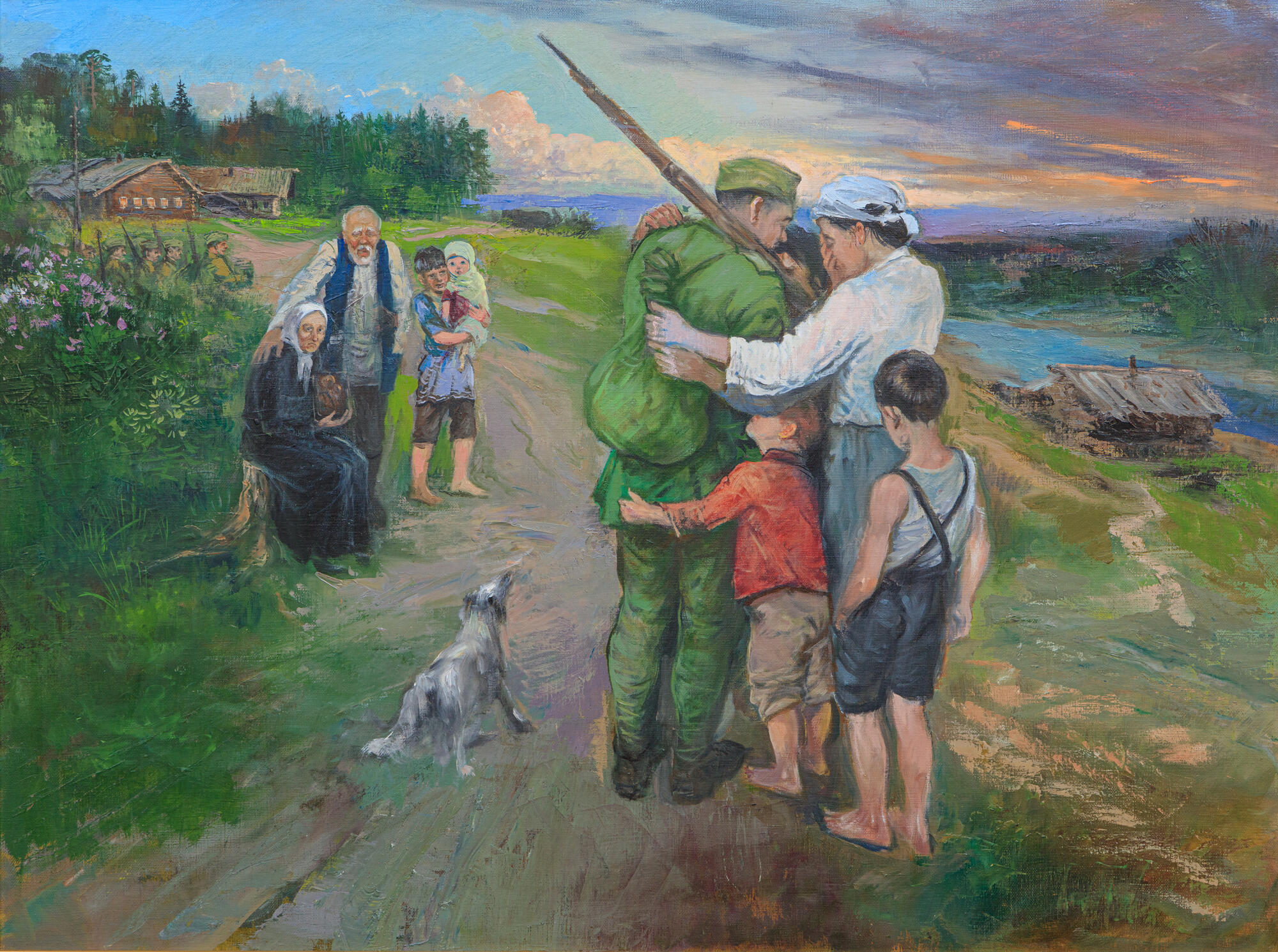Vladimir Treshchev’s painting “Seeing Off. 1941” is devoted to the theme of the Great Patriotic War. In the foreground, the artist depicted a man in military uniform, next to him is a woman and two boys, apparently, his wife and children, who see him off to the front. A little further are the figures of two elderly people, the soldier’s parents. In the background, there are village houses; on the left side of the canvas, the artist painted a path leading down to the river.
On the very first day of the war, a decree of the Presidium of the Supreme Soviet of the USSR was issued on the mobilization of those liable for military service. Martial law was declared in many regions of the country, including the Arkhangelsk region. A recruiting station was opened in the village of Rikasikha. The soldiers were taught to dig trenches and equip dugouts, ski with gas masks, and shoot using different types of weapons. After this initial preparation, they were sent to the front. More than 9,700 residents left the Primorsky district, half of them did not return from the war.
There were no ground battles in the Arkhangelsk region during the war years. Residents and enterprises were evacuated from the north-west of the USSR, an air defense system was organized, and a hospital system of the Karelian Front was deployed. At that time, most of the sea cargo went through Arkhangelsk, because the other large northern port — Murmansk — was under constant enemy fire.
From the first months of the war, the region suffered from poor food supplies. Bread was given out on ration cards, its rate was the same as in the besieged Leningrad: 125 grams per day per person. Local residents fished mussels and shrimps in the sea, hunted seals, ate eggs of wild birds. Despite this, the residents of Arkhangelsk continued to work in factories: they repaired ships, manufactured military equipment and ammunition for the front.
On the very first day of the war, a decree of the Presidium of the Supreme Soviet of the USSR was issued on the mobilization of those liable for military service. Martial law was declared in many regions of the country, including the Arkhangelsk region. A recruiting station was opened in the village of Rikasikha. The soldiers were taught to dig trenches and equip dugouts, ski with gas masks, and shoot using different types of weapons. After this initial preparation, they were sent to the front. More than 9,700 residents left the Primorsky district, half of them did not return from the war.
There were no ground battles in the Arkhangelsk region during the war years. Residents and enterprises were evacuated from the north-west of the USSR, an air defense system was organized, and a hospital system of the Karelian Front was deployed. At that time, most of the sea cargo went through Arkhangelsk, because the other large northern port — Murmansk — was under constant enemy fire.
From the first months of the war, the region suffered from poor food supplies. Bread was given out on ration cards, its rate was the same as in the besieged Leningrad: 125 grams per day per person. Local residents fished mussels and shrimps in the sea, hunted seals, ate eggs of wild birds. Despite this, the residents of Arkhangelsk continued to work in factories: they repaired ships, manufactured military equipment and ammunition for the front.










